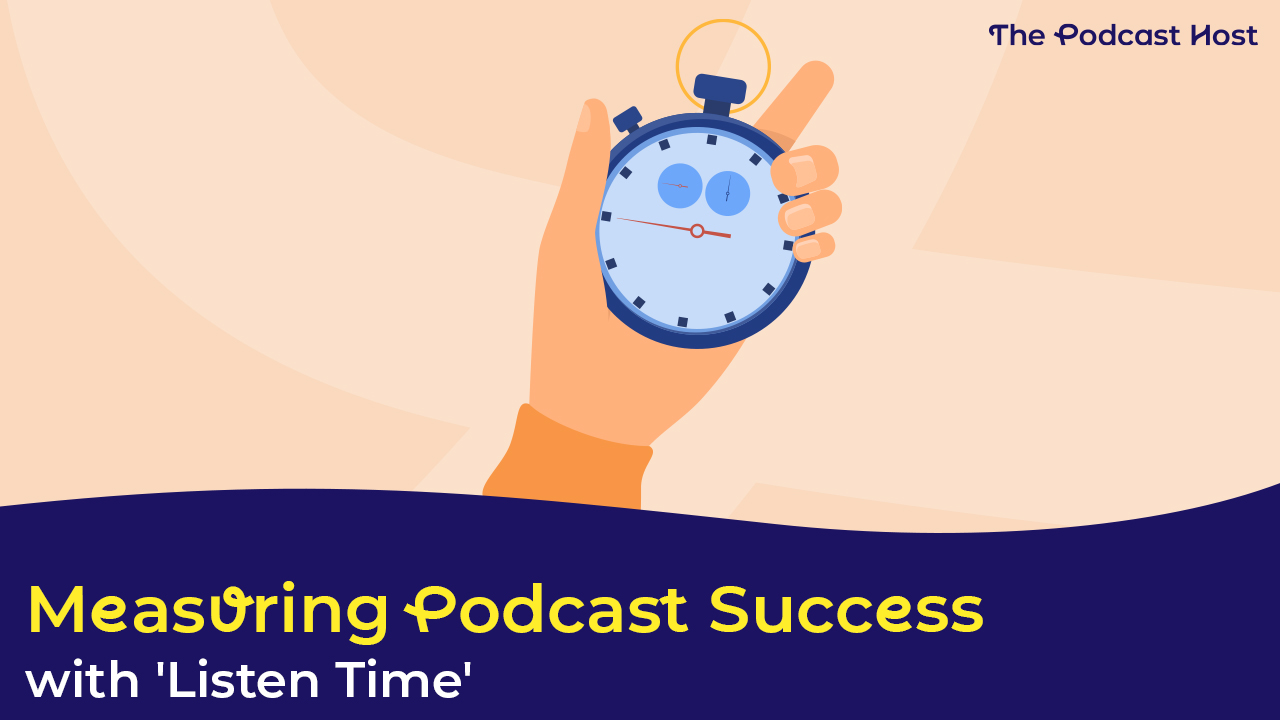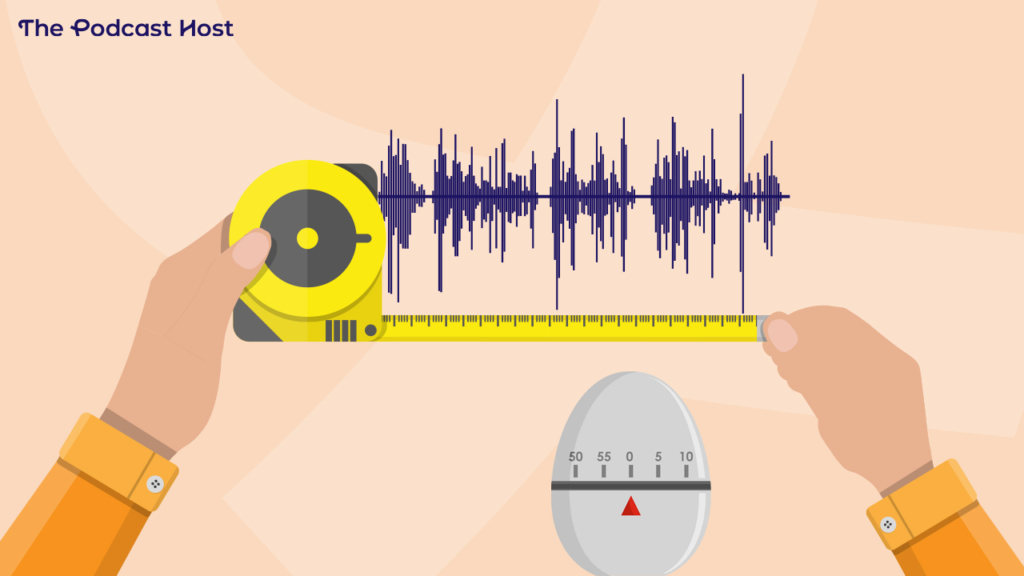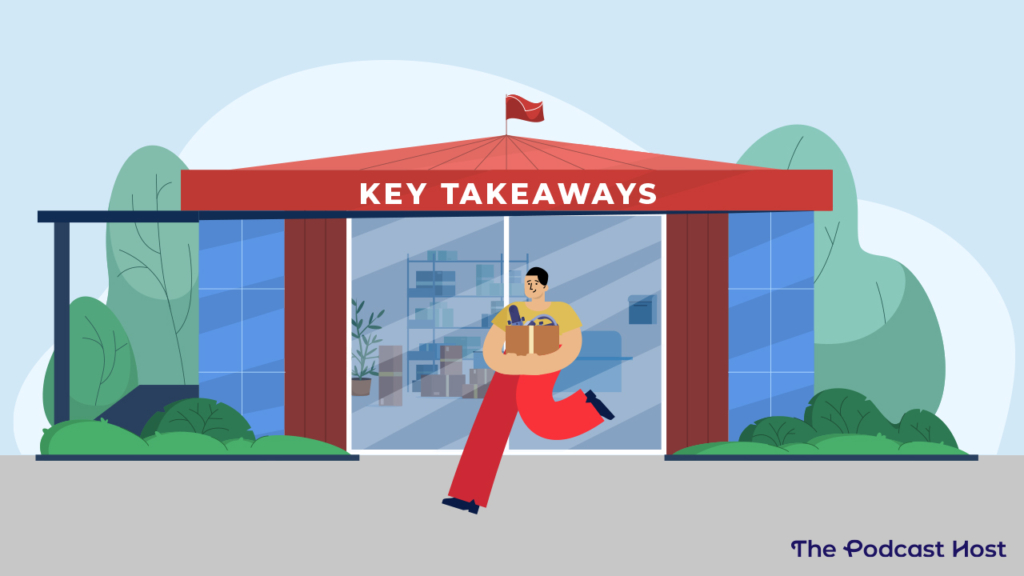Bumper Proposes ‘Better’ Way Than Downloads to Measure Podcast Success

Measuring the success of your podcast can feel like a bit of a shot in the dark. There’s no ‘right’ way to do it.
This is mostly down to the fact that no metric is perfect. But it’s also because ‘success’ means different things to different podcasters. Is it growing your followers or subscribers? Achieving a good ROI through monetisation? Or, ranking in the podcast charts? It all depends on what your goal is, really.
For most of us though, it’s the download numbers we use to measure podcast success. Although, we know this metric’s not entirely perfect either.
So, this week, a podcast marketing agency called Bumper claimed they’ve found a ‘better way’ to track podcast performance: Listen time.
But is listen time a ‘better’ podcast metric than downloads? Let’s take a look.

What is ‘Listen Time’?
Bumper defines ‘listen time’ as the total amount of time your audience spends listening to your podcast, aggregated across all listening platforms.
Compared to download numbers, they say, listen time “gets closer to measuring what many podcasters really want: the time and attention of their audiences”.
According to the agency, the impressive thing about the listen time metric is how much your podcast can tot up. They have podcast clients whose listen time could be measured in years. Therefore, “The total amount of aggregate human attention earned by a well-executed podcast can exceed the lifetime of a human being”. Wow.
Measuring Listen Time
I won’t go into the details of how to measure your podcast listen time metric – I’ll leave that to Bumper. If you want to try it, you can run through the steps in this guide. But be warned; it’s not just a matter of pulling numbers from your podcast analytics. It takes a fair bit of time.
Essentially, listen time is the total sum of a variety of values pulled together from all the listening platforms your podcast is available on. So not just Apple Podcasts and Spotify. But also platforms like YouTube, Google Podcasts (while it’s still with us) Anchor, and others. And to make matters more difficult, few podcast listening platforms actually track listen time. You also need to pull the numbers that are available together yourself using semi-laborious workarounds.
Listen Time Vs Downloads: Which is Better?
Interestingly, Bumper has gone down the route of claiming that podcast listen time is a ‘better’ metric to measure than downloads. While it’s alluring to think about, and can be useful, it’s also flawed.
The problem with listen time is that, for one, it takes a lot of time and effort to measure. And as Bumper even admits – the metric is “not perfect”. It’s also “not a technical specification” but rather, a “conservative back-of-the-envelope estimate”.
The biggest problem I see with the listen time metric is that the length of your podcast episodes dictates ‘success’. If you run a mini-podcast (a format becoming increasingly popular), your listen time metric will always be lower than a podcast with hour-long shows. This will be the case even if the mini-podcast is more popular and has more downloads.
But again, download numbers aren’t perfect either. Despite this being the primary metric used for ad sales and rankers, the numbers aren’t entirely reliable.
Auto-downloads can result in plays being registered without any listening taking place, or if someone only listens to a show for 5 seconds. IAB-verified stats are a step in the right direction to combat this, but podcast downloads can still be “gamed”. A while ago, it also transpired that it was possible for podcasters to essentially ‘buy’ fake podcast downloads through gaming apps. So, listen time, partnered with download numbers, could definitely provide more robust “proof” that your podcast has a genuine audience.

What Can Podcasters Take From This?
While listen time definitely isn’t perfect, and it certainly isn’t a ‘better’ metric than downloads, it does have the potential to enrich the data stories we already build around our podcasts.
Lack of time is a problem for many indie podcasters. At the moment, calculating your podcast listen time will mean you either spend less time on your content, or more overall time on your podcast. That’s not to say you shouldn’t, but it’s not a decision to be taken lightly.
If your show is well established and you’re stepping up plans to monetise through sponsorship, then this could be a worthwhile time investment. It could really add an extra dimension to your podcast media kit.
Also, if you’re an app developer, there’s a great opportunity here to build something that automatically adds up Apple, Spotify, and YouTube metrics. That could make listen time data much more accessible for the average indie podcaster.
In the meantime, remember that there are many other ways to measure podcast success. None of these can tell the full story in isolation, but you can combine them to build an overall picture of health for your show. And if you’re reaching out to potential sponsors, the more info you can give them, the more likely they are to work with you.
